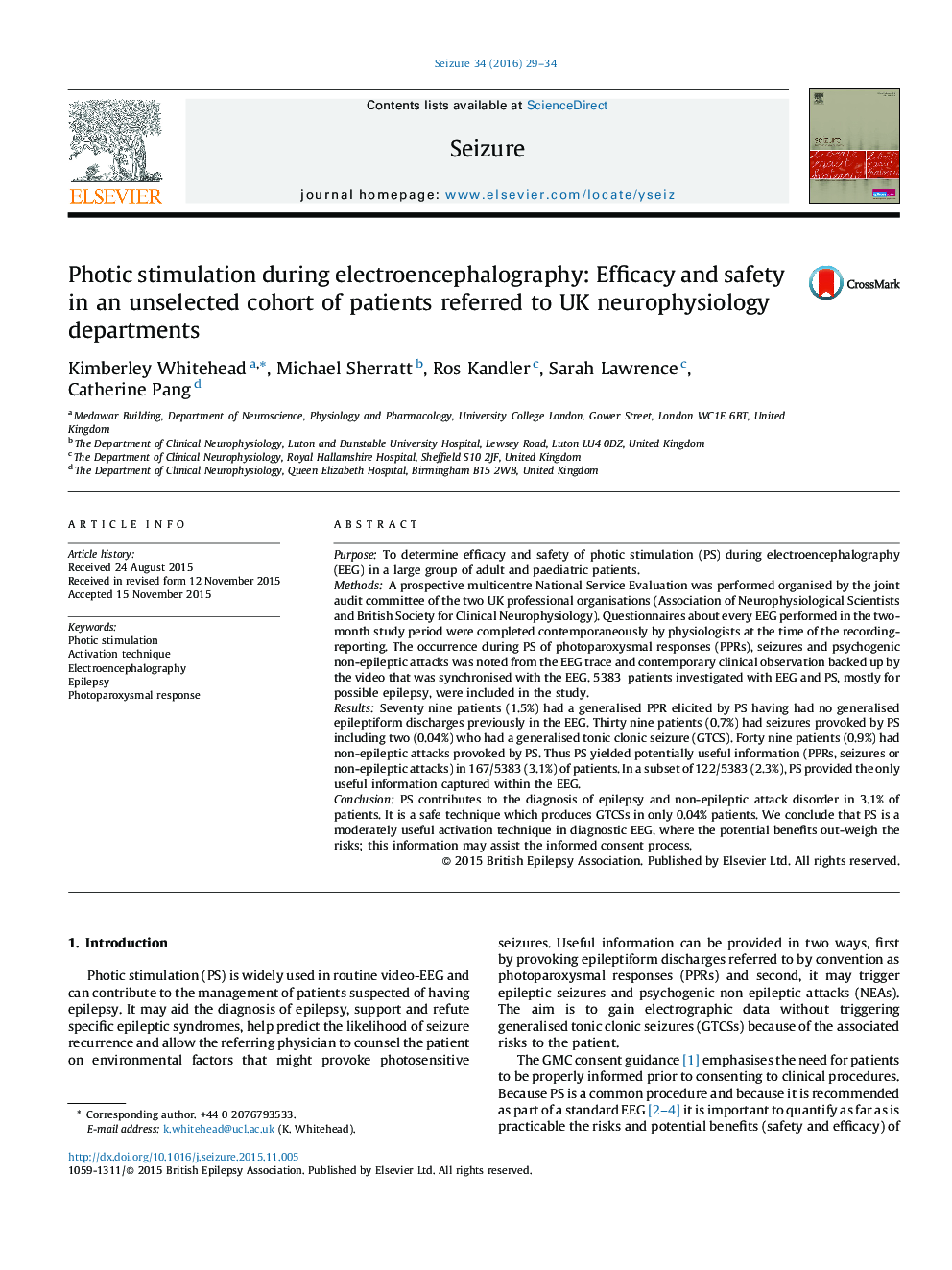| کد مقاله | کد نشریه | سال انتشار | مقاله انگلیسی | نسخه تمام متن |
|---|---|---|---|---|
| 340506 | 548319 | 2016 | 6 صفحه PDF | دانلود رایگان |
• Photic stimulation provided useful diagnostic information in 3.1% of 5383 patients.
• Photic stimulation elicited PPRs in 1.5% of patients.
• Photic stimulation provoked epileptic seizures in 0.7% of patients.
• Photic stimulation provoked non-epileptic attacks in 0.9% of patients.
• Photic stimulation is relatively safe, provoking GTCSs in 0.04% of patients.
PurposeTo determine efficacy and safety of photic stimulation (PS) during electroencephalography (EEG) in a large group of adult and paediatric patients.MethodsA prospective multicentre National Service Evaluation was performed organised by the joint audit committee of the two UK professional organisations (Association of Neurophysiological Scientists and British Society for Clinical Neurophysiology). Questionnaires about every EEG performed in the two-month study period were completed contemporaneously by physiologists at the time of the recording-reporting. The occurrence during PS of photoparoxysmal responses (PPRs), seizures and psychogenic non-epileptic attacks was noted from the EEG trace and contemporary clinical observation backed up by the video that was synchronised with the EEG. 5383 patients investigated with EEG and PS, mostly for possible epilepsy, were included in the study.ResultsSeventy nine patients (1.5%) had a generalised PPR elicited by PS having had no generalised epileptiform discharges previously in the EEG. Thirty nine patients (0.7%) had seizures provoked by PS including two (0.04%) who had a generalised tonic clonic seizure (GTCS). Forty nine patients (0.9%) had non-epileptic attacks provoked by PS. Thus PS yielded potentially useful information (PPRs, seizures or non-epileptic attacks) in 167/5383 (3.1%) of patients. In a subset of 122/5383 (2.3%), PS provided the only useful information captured within the EEG.ConclusionPS contributes to the diagnosis of epilepsy and non-epileptic attack disorder in 3.1% of patients. It is a safe technique which produces GTCSs in only 0.04% patients. We conclude that PS is a moderately useful activation technique in diagnostic EEG, where the potential benefits out-weigh the risks; this information may assist the informed consent process.
Journal: Seizure - Volume 34, January 2016, Pages 29–34
